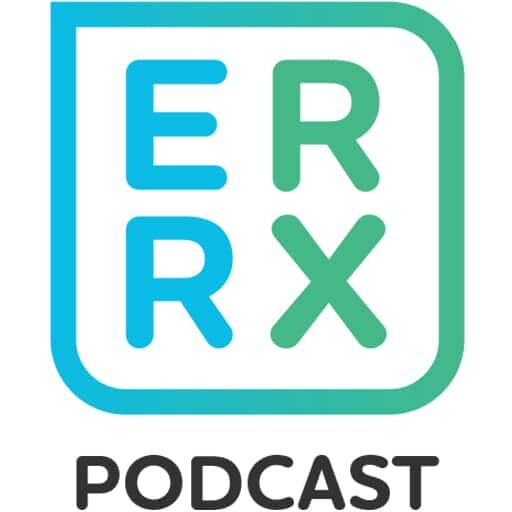Episode 7- Epistaxis: A guideline review focusing on topical agents and prophylactic antibiotics
Episode Summary:
Do we have any data on topical agent use to control nosebleeds? How about prophylactic antibiotics in this setting? Find out on this week’s episode.
Show Notes:
Key Points:
“Topical agents and prophylactic antibiotics in nosebleeds“:
– Intranasal tranexamic acid (TXA) and oxymetazoline are both recommended as initial agents for the management of anterior nosebleeds
– TXA is especially effective and can be administered soaked in a cotton swab/pledget or nebulized
– Prophylactic antibiotics are usually not recommended post-nasal packing. If ordered, consider limiting use to the duration of the nasal packing (1-3 days) and using narrow-spectrum agents such as cephalexin
References:
Transcript:
Hello and welcome to Episode 7 of ER-Rx. Have you ever seen oxymetazoline or tranexamic acid (otherwise known as TXA) given topically to patients with a nosebleed? How about prophylactic antibiotics while a nasal packing is in place? Although these are both common practices in the ER and hospital wards, what does the literature say about this, and is this practice recommended in any guidelines?
Nosebleeds, AKA epistaxis, are a common problem encountered in the ER. Although a majority of nosebleeds are non-severe and self-limiting, about 6% of cases require medical attention. The American Academy of Otolaryngology-Head and Neck Surgery gave us some guidance on how to treat nosebleeds earlier in 2020. The guideline excluded pediatric patients and those with diagnosed bleeding disorders, tumors of the nasopharynx, vascular malformations, a history of recent facial trauma, or those who have undergone nasal or sinus surgery in the past 30 days. The authors recommend initial therapies including a combination of compression, application of topical agents such as vasoconstrictors and hemostatic agents, cautery, and nasal packing. The guideline discusses numerous key action statements. Those include; distinguishing patients who need prompt management from those who do not, nasal compression for at least 5 minutes, nasal packing if compression fails, performing an anterior rhinoscopy to identify the location of the bleed, and numerous management options and patient education points. For more detailed non-medication related guidance I encourage any interested listener to read the guidelines themselves.
In today’s episode, we will focus on topical medications and prophylactic antibiotics only. One recommendation is initial therapy with vasoconstricting agents such as oxymetazoline, epinephrine, or phenylephrine in patients with anterior nosebleeds. These agents can be administered as a nasal spray or on a cotton swab or a cotton pledget. Studies report 65-75% resolution of bleeding with the use of oxymetazoline nasal spray. Only slight caution is advised in patients who have hypertension or cardiac disease due to the very small risk of blood pressure increases. Although we can give epinephrine topically, there is a higher concern for cardiovascular side effects from topical absorption, so we should avoid this practice- and we do at my site. Another agent used topically is TXA. TXA is a cheap antifibrinolytic agent that may work especially well in patients taking antiplatelet drugs. The usual practice is to draw out 300-500 mgs (or 3-5 mLs) from a vial, soak it in gauze or a cotton pledget, and place it in the nose. You can also draw it up in a syringe and atomize the solution intranasally. A meta-analysis from 2019 showed that tranexamic acid led to a faster discharge time, fewer episodes of rebleeding, and a higher patient satisfaction score in those receiving tranexamic acid as compared to the group that did not. I always like to compare different treatment modalities. So which works better, oxymetazoline or tranexamic acid (AKA TXA)? In a small randomized control trial of 38 ER patients, the TXA group achieved hemostasis with first-line therapies in 78% of patients compared with 35% in the oxymetazoline group, which was statistically significant. The average time to hemostasis was similar between groups at 18 minutes.
In terms of prophylactic antibiotics while nasal packing is in place, we have much less guidance for this practice. Nasal packing is usually in for 1-3 days, with no correlation between recurrence of nosebleeds and use of shorter packing durations. Prophylactic antibiotics are given to reduce the risk of infection, and specifically toxic shock syndrome. However, this practice is very controversial. I should remind the listeners that the rate of toxic shock syndrome in this setting is estimated to be about 0.016%! Several studies state that antibiotics in this setting are far from necessary. Although most studies are underpowered to detect something as rare as toxic shock syndrome, antibiotics should be reviewed on a case by case basis, and a large majority of the time antibiotics should not be used. I won’t take up too much of your time to remind you of the risks of unnecessary antibiotics; including breeding multi-drug resistant strains, causing side effects and allergic reactions, and increasing costs. However, I will concede that they can be considered for immunosuppressed patients or those with multiple comorbidities. I would usually use cephalexin or Augmentin for anti-staphylococcal coverage, and I would also discontinue the antibiotics when the nasal packing is out. I’ve seen durations of 1-2 weeks in this setting, which is definitely unnecessary in a large majority of your patients.
In conclusion, topical oxymetazoline or tranexamic acid are both good options for the initial management of anterior nosebleeds. TXA may have the slight edge in terms of efficacy based on a small trial. I would not personally recommend prophylactic antibiotics to prevent infections post-nasal packing. However, if you can’t convince the ER or ENT provider otherwise, or if you yourself are an ER or ENT provider that likes to use this practice, at least limit this practice to the duration of the nasal packing only and use the narrowest spectrum antibiotic that you can.
As always, thank you so much for your time. Please check out our brand new YouTube page and Instagram page with the same name: “ERRxpodcast”. We are also now available on Google Podcasts and will be available on Apple Podcasts shortly.
